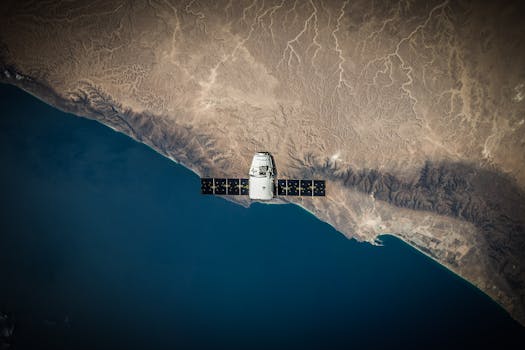
MEO Satellites: Revolutionizing Global Connectivity with Medium Earth Orbit Technology
MEO satellites, or Medium Earth Orbit satellites, are a type of satellite that operates in an orbit between 2,000 and 36,000 kilometers above the Earth’s surface. This orbit is higher than Low Earth Orbit (LEO) satellites but lower than Geostationary Orbit (GEO) satellites. MEO satellites are designed to provide a unique combination of benefits, including global coverage, high-speed data transfer, and low latency.
History and Development of MEO Satellites
The concept of MEO satellites has been around for several decades, but it wasn’t until the 1990s that the first MEO satellite systems were launched. One of the pioneers in MEO satellite technology was the Indian Space Research Organisation (ISRO), which launched its first MEO satellite, the INSAT-2A, in 1992. Since then, several other countries and companies have developed and launched their own MEO satellite systems, including the European Space Agency’s (ESA) Galileo navigation system and the US-based company, O3b Networks.
Benefits and Applications of MEO Satellites
MEO satellites offer several benefits and applications, including:
MEO satellites provide global coverage, allowing them to communicate with users anywhere in the world. This makes them ideal for applications such as navigation, communication, and Earth observation.
MEO satellites operate at a higher altitude than LEO satellites, which reduces the risk of interference and signal degradation. This makes them more reliable and efficient for high-speed data transfer applications.
MEO satellites have a lower latency than GEO satellites, which makes them suitable for real-time applications such as video conferencing and online gaming.
MEO satellites are also used for Earth observation, providing high-resolution images and data for applications such as weather forecasting, crop monitoring, and disaster response.
Future of MEO Satellites
The future of MEO satellites looks promising, with several new systems and technologies being developed. One of the most significant trends is the use of MEO satellites for 5G and 6G networks, which will require high-speed, low-latency connectivity. MEO satellites are also being used for the Internet of Things (IoT), providing connectivity for devices and sensors in remote and hard-to-reach areas. Additionally, MEO satellites will play a critical role in the development of autonomous vehicles, providing real-time navigation and communication services.